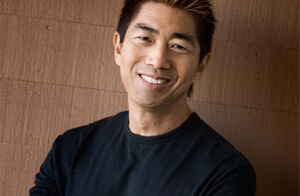Getting to Know the La Piana Team: Vance Yoshida
This blog post is part of our ongoing series highlighting the La Piana team. This week I sat down with Vance Yoshida, Senior Manager.
Can you tell me how you began your career in the nonprofit sector?
My start in the sector was through my father. I began my career working in the family business, which was very rooted in our community. Local nonprofit organizations often sought out my father to join their boards, but my father would volunteer me instead, saying “you don’t need me, you need my son.” I was 22 or 23 when I joined my first board. Talk about not knowing what I was getting myself into! My father taught me the importance of giving back and serving the community. While serving on the boards of nonprofit organizations, I was amazed by how much impact they made, with so few resources. When my family sold our business, I decided to enter the sector completely.
How many years have you worked at La Piana Consulting? Is there a particular engagement that you are most proud of?
This is my 10th year working at La Piana. I am proud of all of the work we have done, but the project I am most proud of is the merger of four HIV-AIDS nonprofits in Colorado into one state-wide organization. Two things made this merger particularly important to me. First, throughout my career I’ve been very much involved in HIV-AIDS organizations. Second, it was especially challenging to bring four different organizations, with different boards, different cultures, and from different parts of the state, together as one cohesive organization. It is just amazing how well they have come together; they are now completely integrated and have built a unified culture.
What changes or trends have you noticed in the sector?
The biggest trend I see going on right now is the change in generational leadership and attitudes towards giving. The younger generation operates in ways very different from the Baby Boomer generation. They are more tech savvy, more transparent, more collaborative, and they really want to be engaged in what the organizations do. This generation doesn’t just want to give money, they want to be involved in the purpose or cause of the organization—they want to find different ways to contribute more than money to the mission of organization.
Another major trend is the use of technology in disseminating information. The younger generation, aided by technology, is more collaborative and wants to build on one another’s ideas, one another’s ways of doing things. To me, that is very exciting.
Many people say that the key to finding a rewarding career in the nonprofit sector is to work for an organization with a cause you are passionate about and smart people you can learn from. Is there a particular person that really inspired you?
Pat Christen was CEO of the San Francisco AIDS Foundation while I was the chair of the Foundation’s board. She inspired me to move into the sector, to make a career within it. She showed me the importance of keeping focused on impacting the organization’s mission—that focusing on the mission is most important thing you could do. That’s what counts at the end of the day. The things that San Francisco AIDS Foundation did under her leadership were always the things that had the greatest impact on the mission: ending the pandemic of AIDS.
For example, there was a time when the biggest cause of new HIV cases among infants was pregnant mothers passing HIV to their children due to contaminated needles used by intravenous drug users. We implemented the first needle exchange in a major city — even though it was technically illegal and there was no funding for this type of work from the federal government (because it was illegal under federal law). We were also involved in creating the Ryan White Care Act, which has brought billions of dollars into the community to fight HIV/AIDS.
It is amazing what can be done and what impact an organization can have when it keeps focused on its mission.
Is there a particular book or film that you read or watched recently that has really stuck with you?
I recently watched the documentary Inequality for All, directed by Jacob Kornbluth and narrated by Robert Reich. It talks about how a larger and larger percentage of wealth is being concentrated in the top 1% of the U.S. population and the widening economic gap. It examines the impact of losing a vibrant middle class—something that has been the foundation of our country since the beginning — and how when you lose that, you lose a vibrant and healthy democracy.
If people can see there is opportunity to have a better life, then people can build toward it. In the past, people could see the path and possibility of improving their status; they could dream of buying a home or a car and that their children would be better educated than themselves.
What is scary is that now people don’t have that dream anymore. They’re struggling to make ends meet. And what happens when you have the bulk of folks in society who no longer have hope? It is really scary.
We need to make sure there are opportunities for children to get quality education, that there are jobs waiting for them when they finish school. We need to make sure that people have hope that things can and will be better.


Comment section